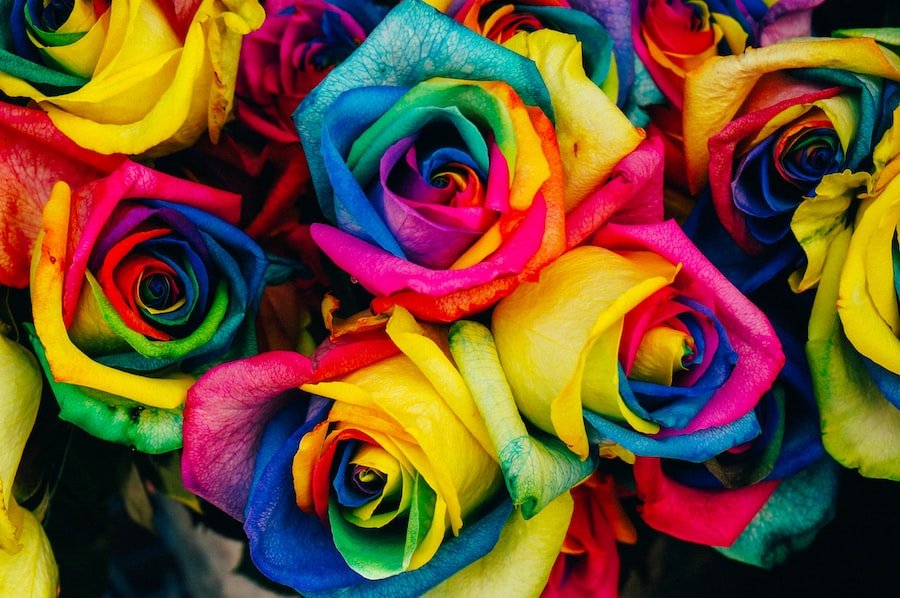

The Colors of the French Language: French Idioms that Paint Pictures with Words
Idioms are expressions or phrases that have a figurative meaning that is different from the literal meaning of the words used. They are an important part of any language as they add color, depth, and cultural context to communication. French idioms are no exception, and they play a significant role in the language.
French idioms are expressions that are unique to the French language and are used by native speakers in everyday conversations. They often reflect the culture, history, and values of France. Understanding and using French idioms can greatly enhance one’s ability to communicate effectively in the language and also provide insights into the French way of life.
Table of Contents
ToggleThe role of colors in French idioms and expressions
Colors hold great significance in French culture. They are often associated with emotions, symbolism, and cultural references. Therefore, it is no surprise that colors play a prominent role in French idioms and expressions.
Colors are used metaphorically in French idioms to convey certain meanings or emotions. For example, the color blue is often associated with sadness or melancholy, while red is associated with passion or anger. By using colors in idiomatic expressions, the French language adds depth and nuance to communication.
The color blue in French idioms: meanings and usage
The color blue holds various meanings in French idioms. It is often associated with sadness or melancholy. For example, the idiom “avoir le blues” translates to “to have the blues” and means to feel sad or down. Another example is “être triste comme un bonnet de nuit bleu,” which translates to “to be as sad as a blue nightcap” and means to be extremely sad.
The cultural significance of the color blue in France can be traced back to history and art. In medieval times, blue was considered a rare and expensive color, often associated with royalty. It was also a color commonly used in religious art, symbolizing the divine. Today, blue is still associated with depth, calmness, and tranquility in French culture.
Red in French idioms: symbolism and connotations
The color red is often associated with passion, love, and anger in French idioms. For example, the idiom “voir rouge” translates to “to see red” and means to become extremely angry. Another example is “rouge de honte,” which translates to “red with shame” and means to be extremely embarrassed.
The cultural significance of the color red in France can be seen in various aspects of French culture. Red is the color of love and romance, as seen in the famous French phrase “la vie en rose,” which translates to “life in pink” and means to see life through a romantic lens. Red is also associated with revolution and political movements, as seen in the French flag and the iconic red beret worn by revolutionaries.
Green in French expressions: associations and interpretations
The color green is often associated with nature, freshness, and envy in French idioms. For example, the idiom “être vert de jalousie” translates to “to be green with envy” and means to be extremely jealous. Another example is “avoir la main verte,” which translates to “to have a green thumb” and means to have a talent for gardening.
The cultural significance of the color green in France can be seen in the country’s lush landscapes and appreciation for nature. Green is often associated with growth, fertility, and renewal. It is also a color commonly used to represent environmental movements and sustainability.
Yellow in French idioms: cultural references and meanings

The color yellow holds various meanings in French idioms. It is often associated with cowardice or betrayal. For example, the idiom “avoir une peur bleue” translates to “to have a yellow fear” and means to be extremely scared. Another example is “un jaune,” which translates to “a yellow” and refers to a person who betrays their comrades.
The cultural significance of the color yellow in France can be traced back to history and literature. In medieval times, yellow was associated with treachery and betrayal. It was also the color worn by Jews during the Holocaust, symbolizing their persecution. Today, yellow is often associated with caution or warning in French culture.
White in French idioms: purity, innocence, and more
The color white is often associated with purity, innocence, and neutrality in French idioms. For example, the idiom “blanc comme neige” translates to “white as snow” and means to be completely innocent or pure. Another example is “voir tout en blanc,” which translates to “to see everything in white” and means to have a positive outlook on life.
The cultural significance of the color white in France can be seen in various aspects of French culture. White is often associated with weddings and bridal attire, symbolizing purity and new beginnings. It is also a color commonly used in religious ceremonies and represents spirituality and holiness.
Black in French expressions: darkness, mystery, and beyond
The color black is often associated with darkness, mystery, and negativity in French idioms. For example, the idiom “voir la vie en noir” translates to “to see life in black” and means to have a pessimistic outlook on life. Another example is “être noir de colère,” which translates to “to be black with anger” and means to be extremely angry.
The cultural significance of the color black in France can be seen in various aspects of French culture. Black is often associated with elegance and sophistication, as seen in the iconic little black dress. It is also a color commonly used in mourning and represents grief and loss.
Pink in French idioms: femininity and romance
The color pink is often associated with femininity, romance, and sweetness in French idioms. For example, the idiom “voir la vie en rose” translates to “to see life in pink” and means to see life through a romantic lens. Another example is “rose bonbon,” which translates to “candy pink” and refers to something that is excessively sweet or overly romantic.
The cultural significance of the color pink in France can be seen in various aspects of French culture. Pink is often associated with love, beauty, and delicacy. It is also a color commonly used to represent femininity and is often associated with young girls and princesses.
How French idioms reflect the culture and history of France
French idioms reflect the culture and history of France in various ways. They provide insights into the values, beliefs, and experiences of the French people. For example, idioms that use colors associated with love and romance reflect the importance of love and relationships in French culture. Idioms that use colors associated with political movements reflect the country’s history of revolution and activism.
Understanding French idioms is crucial for understanding the language and culture of France. They add depth, nuance, and cultural context to communication. By learning and using French idioms, learners can gain a deeper understanding of the language and connect with native speakers on a more meaningful level.
In conclusion, French idioms are an important part of the language as they reflect the culture, history, and values of France. Colors play a significant role in French idioms, adding depth, symbolism, and cultural references to communication. Understanding French idioms is crucial for understanding the language and culture of France. By learning and using French idioms, learners can enhance their ability to communicate effectively and gain insights into the French way of life.
If you want to learn French, you can register for classes here. We look forward to hearing from you and helping you become fluent in French!
If you want to learn Norwegian, you can register for classes here. We look forward to hearing from you and helping you become fluent in Norwegian.





